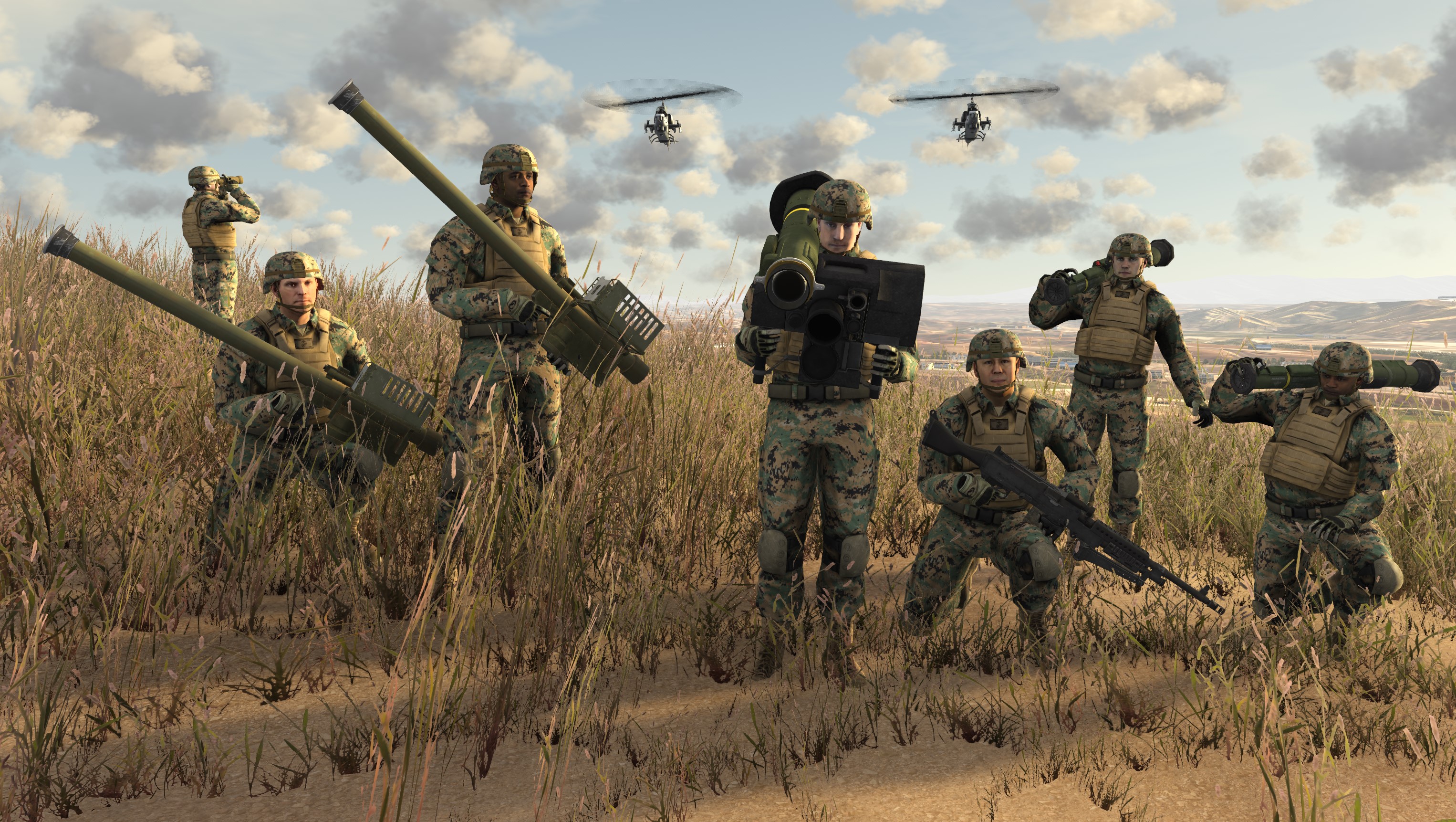
VR-Engage 2.0.3 has arrived! Here is what's new.
By Len Granowetter
We just announced our mid-2023 set of maintenance releases for the MAK ONE applications – VR-Forces, VR-Vantage, and VR-Engage. For the most part, maintenance releases are about bug fixes, optimizations, and other minor configuration changes that make our customers’ experience better. But sometimes, maintenance releases also include some targeted new capabilities that are additive or low-impact - that’s the case with the VR-Engage 2.0.3 release.
The most significant enhancement in VR-Engage 2.0.3 is a much more flexible system for configuring and deploying shoulder-fired weapons when engaged as a human character. Shoulder-mounted weapons are now available as resources that can be added to most soldier characters in VR-Engage during scenario authoring, or at run-time – either directly from the VR-Forces GUI (acting as an Instructor Operator Station), or through the actions of tasks and plans (for example, as a result of walking past a weapons cache or supply vehicle). These weapons now essentially use the same user-interface as rifles and other hand-held firearms – simply bring to the aiming position by holding right-mouse (rather than having to enter a “Use Weapon” state through the action menu as with the Javelin in prior releases), and left-mouse to fire.
Configuration of these weapons is also now much more flexible and powerful: On the back-end modeling side, individual types of weapons are defined in “sysdef” files (e.g. handheld-rpg-launcher.sysdef). These files can be referenced by a “composite weapons system” sysdef file to define a set of weapons that can be associated with any entity type with a single line in a .entity file. For the VR-Engage front-end user interface, Lua configuration files dictate whether a weapon has an iron sight, optical scope, or digital display; and specify various parameters of each specific weapon’s interface – including overlays, availability of NVG or IR sensor displays, scope magnification levels, the icon that should be used on the player’s HUD to indicate remaining ammunition, and more. For more complex weapons like the Javelin, users can choose between direct and top-down attack modes, and can employ two-stage triggers. Additional parameters specify what 3D model should be displayed (as a DI-Guy “hand-item”) when viewing a 3rd person character that is aiming a particular type of shoulder-mounted weapon. More information about the updated system for configuring and using shoulder-fired weapons can be found in Section 5.5.8 of the VR-Engage User Guide: “Rocket and Missile Launchers”.
These enhancements were implemented based on feedback from the Land Systems Core 2.0 program – Australia’s flagship simulation and training program – which selected the MAK ONE platform in 2022 to serve as the common simulation software system for a wide variety of Army vehicle and infantry training use cases.
Other new capabilities in VR-Engage 2.0.3 include:
· For the aircraft Pilot role, the ability to control flight with a mouse and keyboard (previously, the Pilot role required a game controller or dedicated stick-and-throttle device).
· For ground vehicles, the ability to easily switch between multiple pre-configured viewpoints without switching roles (e.g. in-cabin remote camera view vs. out-the-hatch views for the Commander of a ground vehicle).
· For the Sensor Operator role, the ability to control gimbaled sensors or remote cameras via mouse and keyboard (pan to slew, and mouse wheel to zoom) vs. requiring a joystick or game controller.
· As with VR-Vantage and VR-Forces, this release adds a tool called the “mini-dumper” to help debug any software crashes users might encounter on project-specific scenarios, terrains, etc. When you install “.pdb” files into the VR-Engage bin64 folder, any crash will automatically result in the call stack being written to a plain text file that can easily be inspected by security folks before sending to the MAK technical support team.
Finally, VR-Engage 2.0.3 includes a new “NTC Ground” scenario based on a demonstration we first unveiled at I/ITSEC 2022. This battalion-level scenario involves a Cavalry Squadron (with help from artillery and other Regimental assets) fixing a small irregular force in the “Junction City” town, then bypassing the town, moving to contact, and engaging the main enemy force with both direct and indirect fire, as well as support from aircraft – on the way to its objective at Nelson Lake. The scenario takes place within our geo-specific National Training Center (Fort Irwin) terrain area – part of our whole-earth “MAK Earth” terrain configuration. Distributed with VR-Engage (and with the VR-Engage add-ons to VR-Forces), the scenario is meant to demonstrate the power of the full MAK ONE suite in a collective training environment - with VR-Forces providing the Computer Generated Forces (CGF) and Instructor Operator Station (IOS) capabilities, and VR-Engage serving as a multi-role virtual simulator to support player-controlled entities. Both VR-Forces and VR-Engage use the VR-Vantage rendering engine for 2D / 3D visualization, and both use the MAK Earth terrain engine – to achieve a true, correlated, and comprehensive Common Synthetic Environment.
VR-Engage 2.0.3 is now available to all VR-Engage customers that are under active maintenance.

